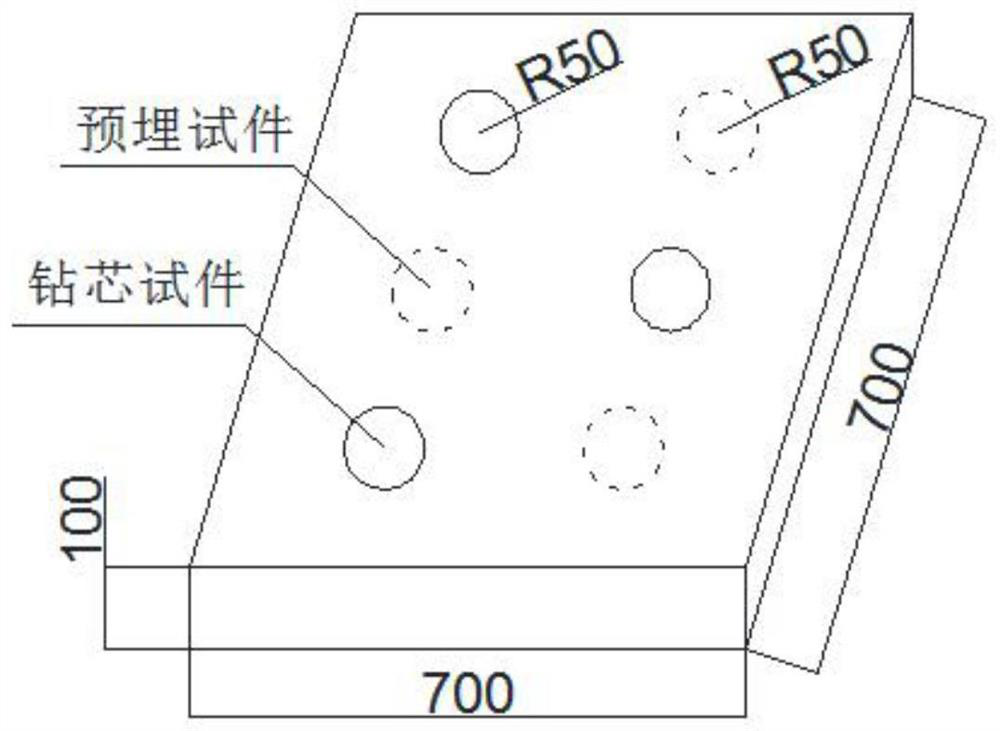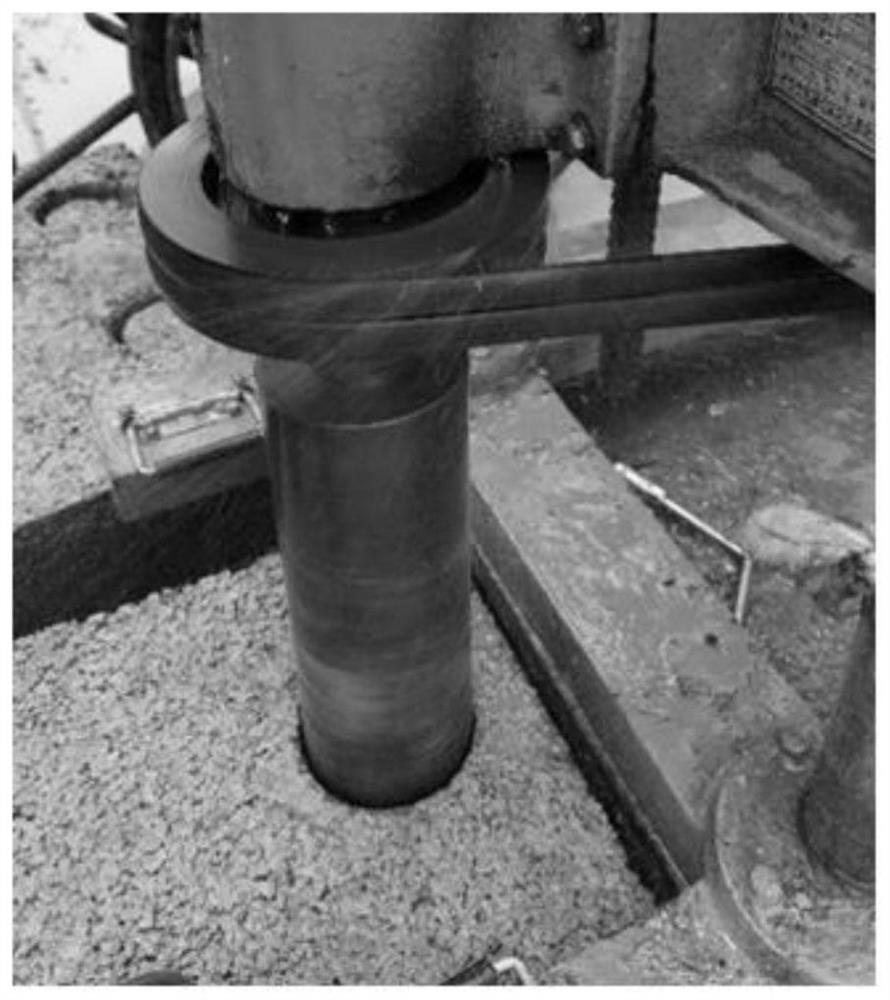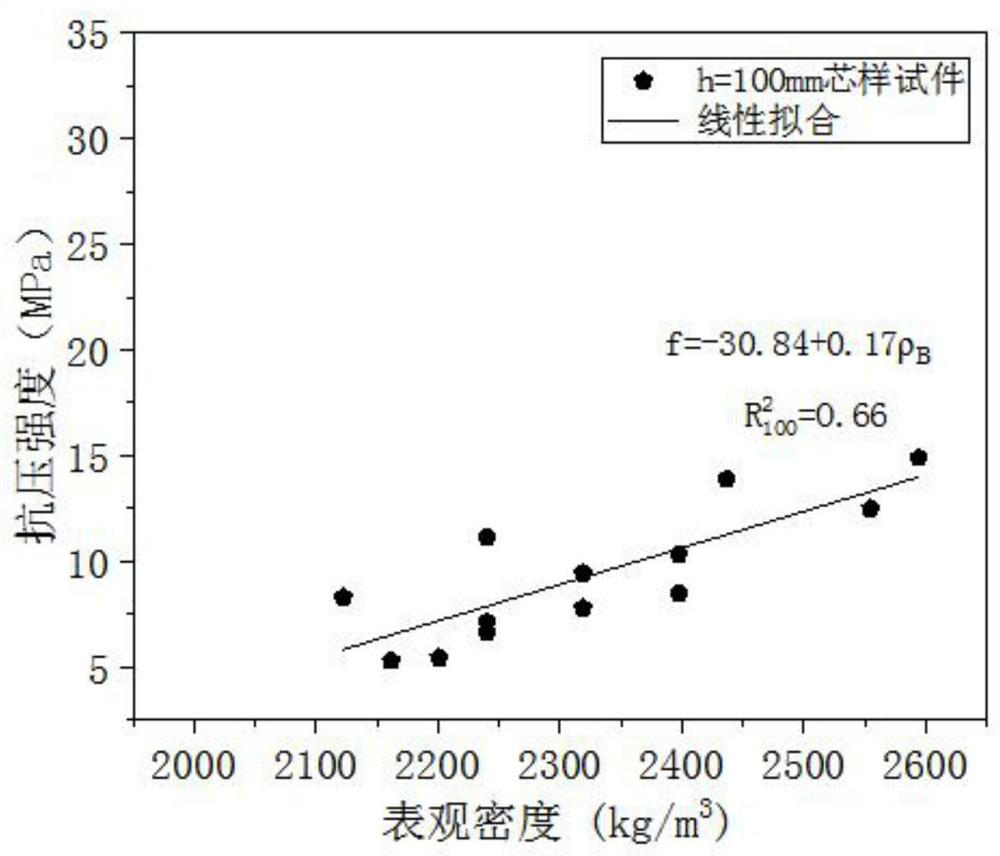Method for calculating compressive strength of pervious concrete
A technology of permeable concrete and compressive strength, which is applied in the direction of strength characteristics, the use of stable tension/pressure test material strength, and measuring devices, which can solve the problems of internal structure influence, large dispersion of results, etc., and achieve the effect of quality assurance
- Summary
- Abstract
- Description
- Claims
- Application Information
AI Technical Summary
Problems solved by technology
Method used
Image
Examples
Embodiment
[0052] The relationship between the apparent density and compressive strength of permeable concrete for standard cubic specimens, drill core sampling specimens, and pre-embedded cylindrical specimens:
[0053] Drill core sample specimen:
[0054] h=100mm f=-30.84+0.17ρ B R 2 100 =0.66 (1)
[0055] h=150mm f=-27.09+0.15ρ B R 2 150 =0.72 (2)
[0056] h=200mm f=-24.16+0.14ρ B R 2 200 =0.73 (3)
[0057] Embedded cylindrical specimen:
[0058] h=100mm f=46.72+0.03ρ B R 2 100 =0.74 (4)
[0059] h=150mm f=-46.78+0.03ρ B R 2 150 =0.91 (5)
[0060] h=200mm f=-49.92+0.03ρ B R 2 200 =0.85 (6)
[0061] Standard cubic specimen: f=-93.95+0.05ρ B R 2 =0.83 (7)
[0062] In the formula:
[0063] f—compressive strength, MPa;
[0064] ρ B —Apparent density, kg / m 3 ;
[0065] R 2 - Goodness of fit (the closer the reading is to 1, the closer the fitted value is to the experimental value).
[0066] Table 1 Experimental Research Mix Ratio
[0067]
[0068]...
PUM
| Property | Measurement | Unit |
|---|---|---|
| diameter | aaaaa | aaaaa |
| particle diameter | aaaaa | aaaaa |
| particle diameter | aaaaa | aaaaa |
Abstract
Description
Claims
Application Information
 Login to View More
Login to View More - R&D
- Intellectual Property
- Life Sciences
- Materials
- Tech Scout
- Unparalleled Data Quality
- Higher Quality Content
- 60% Fewer Hallucinations
Browse by: Latest US Patents, China's latest patents, Technical Efficacy Thesaurus, Application Domain, Technology Topic, Popular Technical Reports.
© 2025 PatSnap. All rights reserved.Legal|Privacy policy|Modern Slavery Act Transparency Statement|Sitemap|About US| Contact US: help@patsnap.com



